While it is important to check on your cholesterol levels and blood pressure, keeping an eye on your triglycerides is highly advisable. Increased triglycerides fat levels in your blood can be a potential risk for heart complications. To avoid this, check on your lifestyle and your diet too. Most of your body fats are stored as triglycerides. Ideally, your body stores excess sugar or calories as the fat in these triglycerides form. Therefore, don’t eat foods high in triglycerides to avoid high triglycerides.
Facts About Triglycerides
Triglycerides are lipids present in your blood. After eating foods high in triglycerides, your body converts excess calories into triglycerides that are then stored in the fat cells in your body. In between meals, hormones release these triglycerides for energy. High levels of triglycerides cause hypertriglyceridemia.
With a simple blood test, your triglyceride level can be determined as follows:
- Normal level <150mg/dL (1.7 millimoles/Liter)
- Borderline high level: Between 150 and 199 mg/dL or1.8 – 2.2mmol/L
- High level: Between 200 and 499 mg/dL or 2.3 – 5.6 mmol/L
- Very high level> 500 mg/dL or 5.7 mmol/L
The optimal triglyceride level recommended by the American Heart Association (AHA) is 100 mg/dL or 1.1 mmol/L. A lower value than this is even better for enhancing the health of your heart. All the same, there are no recommendations by AHA to offer drug treatment in order to attain this level. However, those desiring this level should make changes in lifestyle through diet, physical activity and weight loss since triglycerides respond well to them. In a cholesterol test, your doctor can check for triglyceride levels by asking you to fast between 9 and 12 hours before taking a blood sample from your body.
Foods to Avoid If You Have High Triglycerides
When you notice high triglycerides levels, watch your diet since foods high in triglycerides may make the condition worse. This may pave way for attack to your body, especially with heart related complications.
1. Avoid Starchy Foods
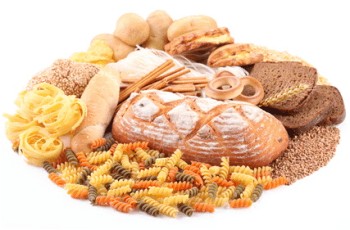 Starchy vegetables: Vegetables are generally good. However, some are starchy like mashed potatoes, beans, yams, peas and corn and thus should control their consumption. This way, your body will not have to convert excess starch into these triglycerides. Instead, eat kale, mushrooms and cauliflower.
Starchy vegetables: Vegetables are generally good. However, some are starchy like mashed potatoes, beans, yams, peas and corn and thus should control their consumption. This way, your body will not have to convert excess starch into these triglycerides. Instead, eat kale, mushrooms and cauliflower.
Refined starch: Foods from refined flours also fall in the category of foods high in triglycerides. White bread made from refined floor does not have fiber needed to lower triglyceride levels in blood. Therefore, you should avoid foods made out of bleached, enriched and refined flours like pasta, bread, rice and crackers.
2. Reduce Saturated and Trans-Fats Intake
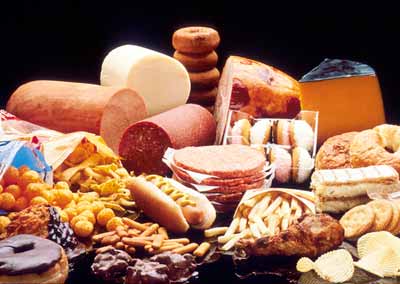 These are commonly found in pizza and animal foods. AHA recommends between 30-35% calories for your body and of these, saturated fats should not exceed 7%. Therefore, avoid or control eating chocolate, cheese, butter, pastries, poultry skin and fatty meats.
These are commonly found in pizza and animal foods. AHA recommends between 30-35% calories for your body and of these, saturated fats should not exceed 7%. Therefore, avoid or control eating chocolate, cheese, butter, pastries, poultry skin and fatty meats.
Trans-fats are in part hydrogenated oils used to make foods have more savory texture and taste and more non-perishable. Foods high in triglycerides lying in this category include fried foods like doughnuts, French fries, cookies, crackers and prepackaged baked foods like pie crusts and pizza.
Tropical oils such as coconut oil and palm oil (unlike most plant oils) are essentially high in saturated fats more than butter. Other oils like cottonseed oil are not recommended for consumption although they have for years been applied in processed foods. Essentially, avoid foods with solid fat at room temperature.
3. Limit Sugars and Sugary Beverages
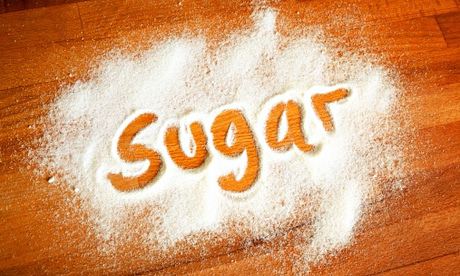 It is evident that foods high in triglycerides are pleasant to eat. Sugars and sugary beverages too have a negative health impact. Added sugar sugars on food have fructose that could increase the amount of triglycerides and fats in your liver. Therefore, you should avoid adding sugar to what you eat. Don’t drink sugary beverages like sports drinks, sweat tea, alcohol and soda. The excess sugar is converted into fats and lipids hence increasing the level of triglycerides in your blood.
It is evident that foods high in triglycerides are pleasant to eat. Sugars and sugary beverages too have a negative health impact. Added sugar sugars on food have fructose that could increase the amount of triglycerides and fats in your liver. Therefore, you should avoid adding sugar to what you eat. Don’t drink sugary beverages like sports drinks, sweat tea, alcohol and soda. The excess sugar is converted into fats and lipids hence increasing the level of triglycerides in your blood.
Foods to Lower Triglycerides
If you have high triglycerides levels, apart from avoiding foods high in triglycerides, there're also some foods that can help to lower your levels, which include:
1. Include More Omega–3 Foods in Your Diet
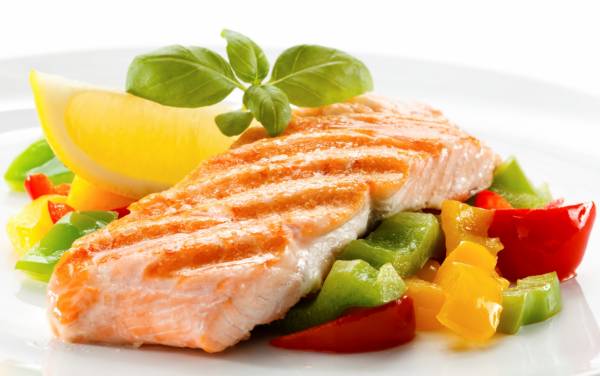 Some fats are healthy and therefore, omega-3 fats can be used when you need to cut down the quantity of saturated and trans-fats from your food. These omega-3 fats are highly recommended for a healthy heart and particularly effective at lowering the levels of triglycerides. You can eat about two omega-3 fish servings like wild salmon, mackerel (although not king), herring, rainbow trout, sardines or maybe oysters every week. Additionally, let your doctor advise you on the habit of including fish oil supplements as part of your diet.
Some fats are healthy and therefore, omega-3 fats can be used when you need to cut down the quantity of saturated and trans-fats from your food. These omega-3 fats are highly recommended for a healthy heart and particularly effective at lowering the levels of triglycerides. You can eat about two omega-3 fish servings like wild salmon, mackerel (although not king), herring, rainbow trout, sardines or maybe oysters every week. Additionally, let your doctor advise you on the habit of including fish oil supplements as part of your diet.
2. Go For Soy Protein
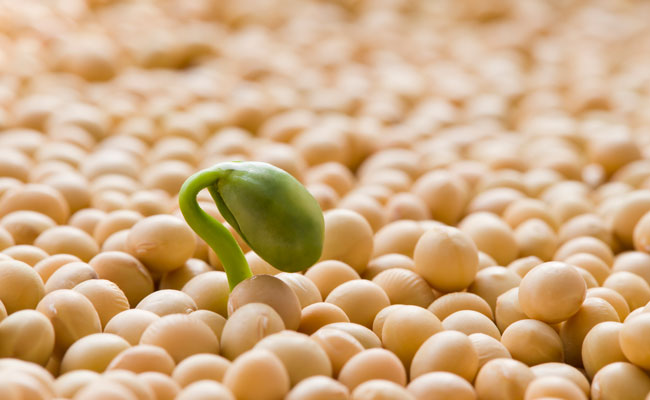 Soy protein is highly recommended for you if you realize that you have high levels of triglycerides. Soy protein lowers the level of triglycerides in your blood more than protein obtained from animal foods. A study published in 2004 in the Atherosclerosis Journal by Canadian researchers amongst 50 year old persons with high blood triglycerides responded positively after taking 25 grams quantity of soy protein for each 1,000 calories consumed.
Soy protein is highly recommended for you if you realize that you have high levels of triglycerides. Soy protein lowers the level of triglycerides in your blood more than protein obtained from animal foods. A study published in 2004 in the Atherosclerosis Journal by Canadian researchers amongst 50 year old persons with high blood triglycerides responded positively after taking 25 grams quantity of soy protein for each 1,000 calories consumed.
3. Enjoy the Benefits of Nuts
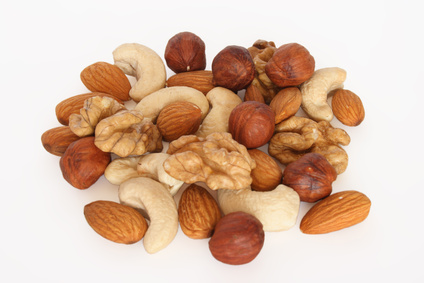 The consumption of nuts is connected to a decreased cardiovascular risk. In the same thought, researchers have in their studies found out that blood lipids can be reduced by consuming nuts. A total of 25 trials were conducted in seven countries in a study with 583 participants of both gender having high and normal cholesterol and published in May 2010 in Archives of Internal Medicine. It was found out that eating about 67 grams of nuts on average on a day-to-day basis lowered triglycerides by about 10% in people who had high levels of triglycerides.
The consumption of nuts is connected to a decreased cardiovascular risk. In the same thought, researchers have in their studies found out that blood lipids can be reduced by consuming nuts. A total of 25 trials were conducted in seven countries in a study with 583 participants of both gender having high and normal cholesterol and published in May 2010 in Archives of Internal Medicine. It was found out that eating about 67 grams of nuts on average on a day-to-day basis lowered triglycerides by about 10% in people who had high levels of triglycerides.
